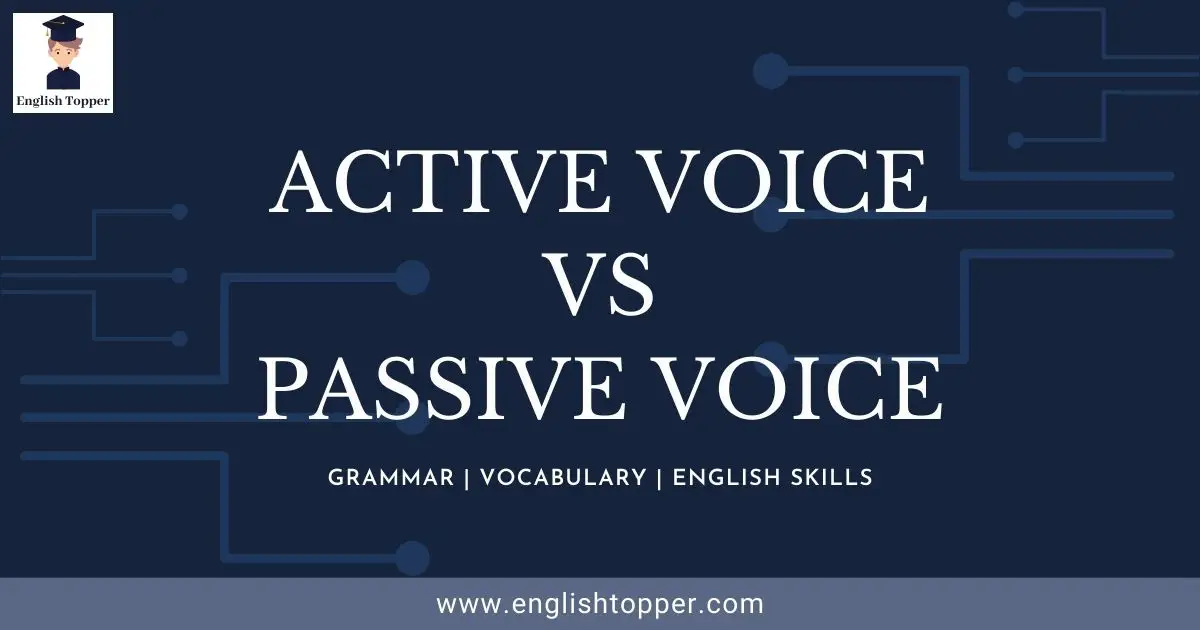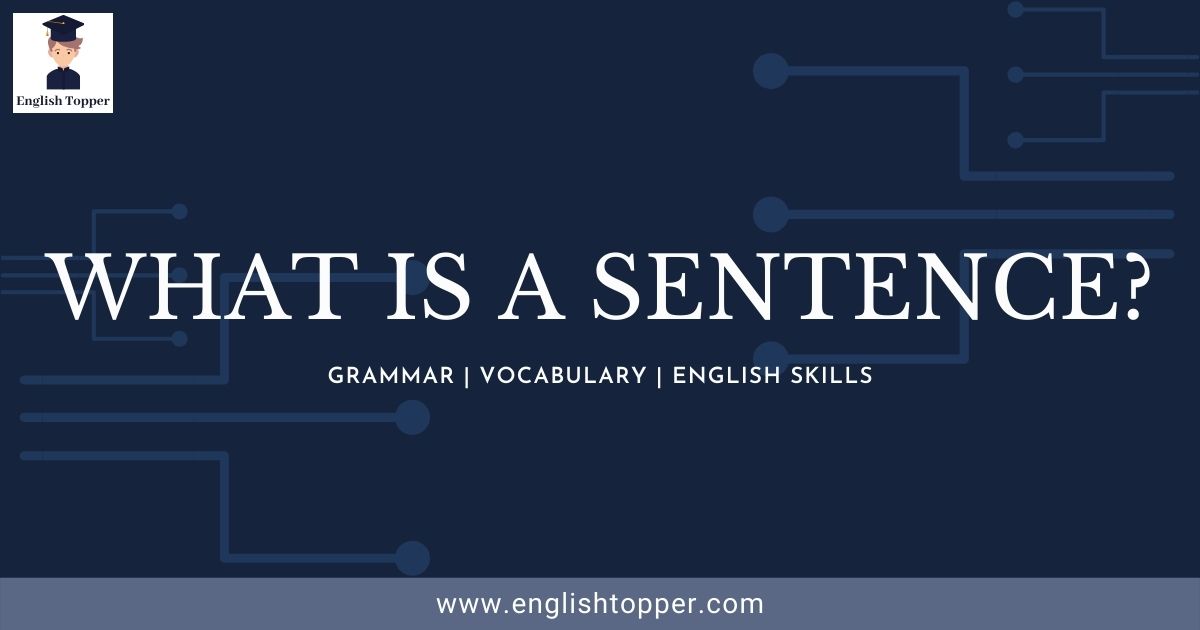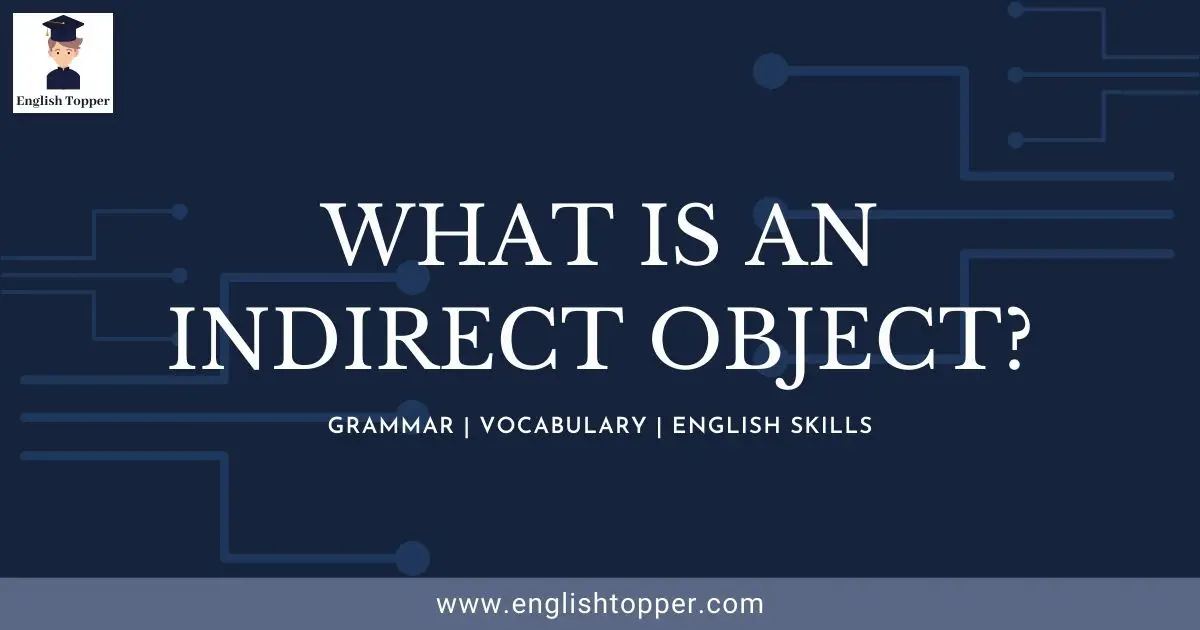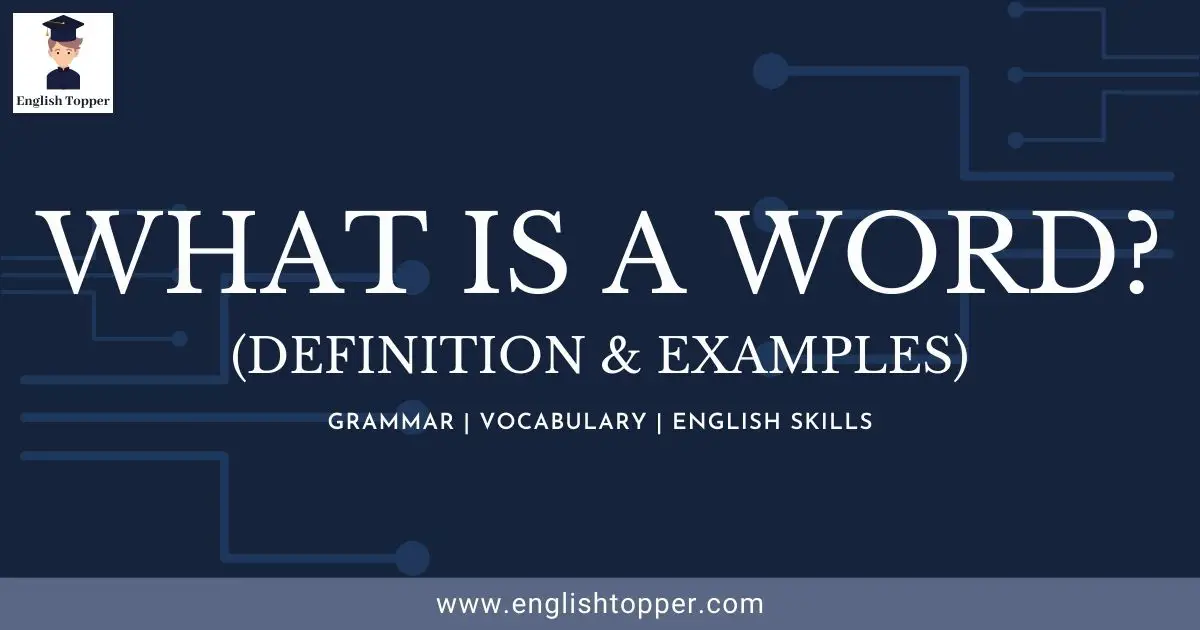Table of Contents
Introduction (Active Voice vs Passive Voice)
First of all, let us understand what is a voice?
A voice is the form of the verb which denotes the actions done by the subject or have to be done.
So, we all know that there are two types of voices. Those are,
- Active Voice
- Passive Voice
These two voices are similar in function and meaning, but structurally, both are different from each other. We are going to learn in detail in this post.
Any sentence can be written in both Active Voice and Passive Voice, but here we need to understand the usage and the purpose of these two.
In order to understand this topic, we need to know about the Sentence Structures (i.e, Subject and Object).
Now, let us understand in detail the Active voice and Passive voice.
What is Active Voice?
Active voice is usually a verb in which the subject (a person, thing, etc) performs an action. In short, it is the doer of the action.
The sentence structure of the Active voice is,
(Active Voice = Subject + Verb + Object)
Here, we can observe that the sentence is in the form of SVO (Subject-Verb-Object).
So, generally Active voice shows
- the subject first
- then the action performed by the subject (verb) and
- later shows on which object the Subject was performed.
Now, let us understand this topic with a few examples.
Examples statements of Active voice:
- The boy ate all the biscuits.
- The cat is sleeping on the table.
- He passed his first interview.
- I eat sweets daily.
- They had won the competition.
In the first example, we can observe that the subject (boy) is shown and then the verb is used (ate) and the later part the object (the biscuits) is shown.
In the second example, the subject (cat), verb (is sleeping) and object (on the table) are used.
In the third example, the subject (he), verb (passed) and object (first interview) are used.
In the fourth example, the subject (I), verb (eat) and object (sweets daily) are used.
In the fifth example, the subject (they), verb (won) and object (the competition) are used.
So, this is all about Active voice. Now, let us understand Passive voice.
What is Passive Voice?
Passive voice is a verb in which the subject (a person, thing, etc) receives an action. In short, it is the receiver of the action. The
The sentence structure of the Passive voice is in OVS (Object-Verb-Subject) form.
(Passive Voice = Object + Verb + Subject)
We can observe that in Passive voice shows,
- the object first
- then the action (verb) and
- later the subject who receives the action.
Let us understand the examples of Passive Voice.
Examples statements of Passive voice:
- Music was played by the band.
- The book was written by Raju.
- The sweets were eaten by me.
- The competition was won by them.
- The exam was passed by John.
In the first example, first the object (music), then the verb (was played) and later the subject (band) is used.
In the second example, first the object (the book), then the verb (was written) and later the subject (Raju) is used.
In the third example, first the object (the sweets), then the verb (were eaten) and later the subject (me) is used.
In the fourth example, first the object (competition), then the verb (was won) and later the subject (them) is used.
In the fifth example, first the object (exam), then the verb (was passed) and later the subject (John) is used.
Active Voice vs Passive Voice | What’s the main difference?
Till now we have seen different examples of both Active Voice and Passive Voice. We also understood the structure based on how it is used.
Now let us understand the main difference by using some examples.
Example Statements:
- Active Voice: Micheal purchased a new car.
- Passive Voice: A new car was purchased by Micheal.
- Active Voice: Sneha didn’t like the job.
- Passive Voice: The job wasn’t liked by Sneha.
- Active Voice: The Government passed a bill.
- Passive Voice: The bill was passed by the Government.
Note: The meaning of the two sentences (Active and Passive Voice) is the same, but the main difference is the structure.
When to use Active and Passive Voice?
1) Use Active Voice when you want to convey your message in
- stong
- polite
- clear tone
- professionally way in business, etc
2) Use Passive Voice,
- When you want to highlight the object rather than the subject in the sentence.
For example,
“The thief was chased by the Police.”
In the above sentence, the object (thief) is more focused than the subject (Police).
Otherwise, you can highlight the subject by using Active Voice. Then the above sentence will be,
“The Police chased the thief.”
Note: Most of the time, we recommend you to use Active Voice rather than Passive voice in writing or speaking.
But if you want to specify or give more importance to the object, then use Passive Voice.
How to convert Passive voice to Active voice?
If you want to convert a sentence from Passive voice to Active voice, then you need to consider a few things that we are going to mention below.
For example consider a sentence as an example, “A new business was started by Tina”.
Step 1: You need to find out the Subject in the sentence. (Subject: Tina)
Step 2: Find the verb in the sentence. (verb: started)
Step 3: Find the Object in the sentence. (Object: a new business)
Step 4: It is in the OVS (Object-Verb-Subject) form because it is a Passive voice sentence. Now convert it to SVO (Subject-Verb-Object) form with appropriate articles, tenses and prepositions.
So, after converting it to SVO, the final result will be,
- Passive Voice: A new business was started by Tina.
- Active Voice: Tina has started a new business.
Quiz Time! (Test your Knowledge here)
#1. Active voice represents ______________.
#2. The Passive voice is preferred more than the Active voice.
Answer: It is false.
#3. Active voice follows which form?
Answer: Active Voice follows SVO form (Subject-Verb-Object).
#4. "He is listening to music". Which type of voice is it?
Answer: Active Voice.
#5. "The event which happened yesterday was successful". Which type of voice is it?
Answer: It is an Active voice sentence.
#6. "He won the lottery". Convert it to Passive voice.
Answer: The lottery was won by him.
#7. "Due to rain, the match was stopped". Which type of voice is it?
Answer: Passive voice.
#8. The Passive voice follows _____ form.
Answer: OVS Form.
#9. "Rahul ate an ice-cream". Which type of sentence is this?
Answer: It is an Active Voice sentence.
#10. "An apple was shared by them". What is the Active voice of it?
Answer: They shared an apple.
Results
|
Getting your Trinity Audio player ready...
|
Hurray….. You have passed this test! 🙂
Congratulations on completing the quiz. We are happy that you have understood this topic very well.
If you want to try again, you can start this quiz by refreshing this page.
Otherwise, you can visit the next topic 🙂
|
Getting your Trinity Audio player ready...
|
Oh, sorry about that. You didn’t pass this test! 🙁
Please read the topic carefully and try again.
Summary: (Active Voice vs Passive Voice)

So, here is the overview of the topic which we have discussed before.
- The voice is used to express the sentence structure through Subject, Verb and Object.
- Active and Passive Voices are the two types of voices.
- Active voice is used if the subject does some action.
- Passive voice is used to refer to the subject with a verb.
- Active voice uses SVO (Subject-Verb-Object) structure in the sentences.
- Whereas, Passive voice follows the OVS (Object-Verb-Subject) structure.
- Active voice is preferred more than Passive Voice because of the usage of fewer words, etc.
If you are interested to learn more, then you can refer to Wikipedia here.
I hope that you understood the topic “Active Voice vs Passive Voice”.
If you have any doubts regarding this topic, comment down below and we will respond as soon as possible. Thank You.
[noptin-form id=701]









everyday i learn something new here
We are glad that you liked our posts 🙂
#7. “The event which happened yesterday was successful”. Which type of voice is it?
It’s a Passive Voice.
To learn more english grammar and needs to use all 12 points.